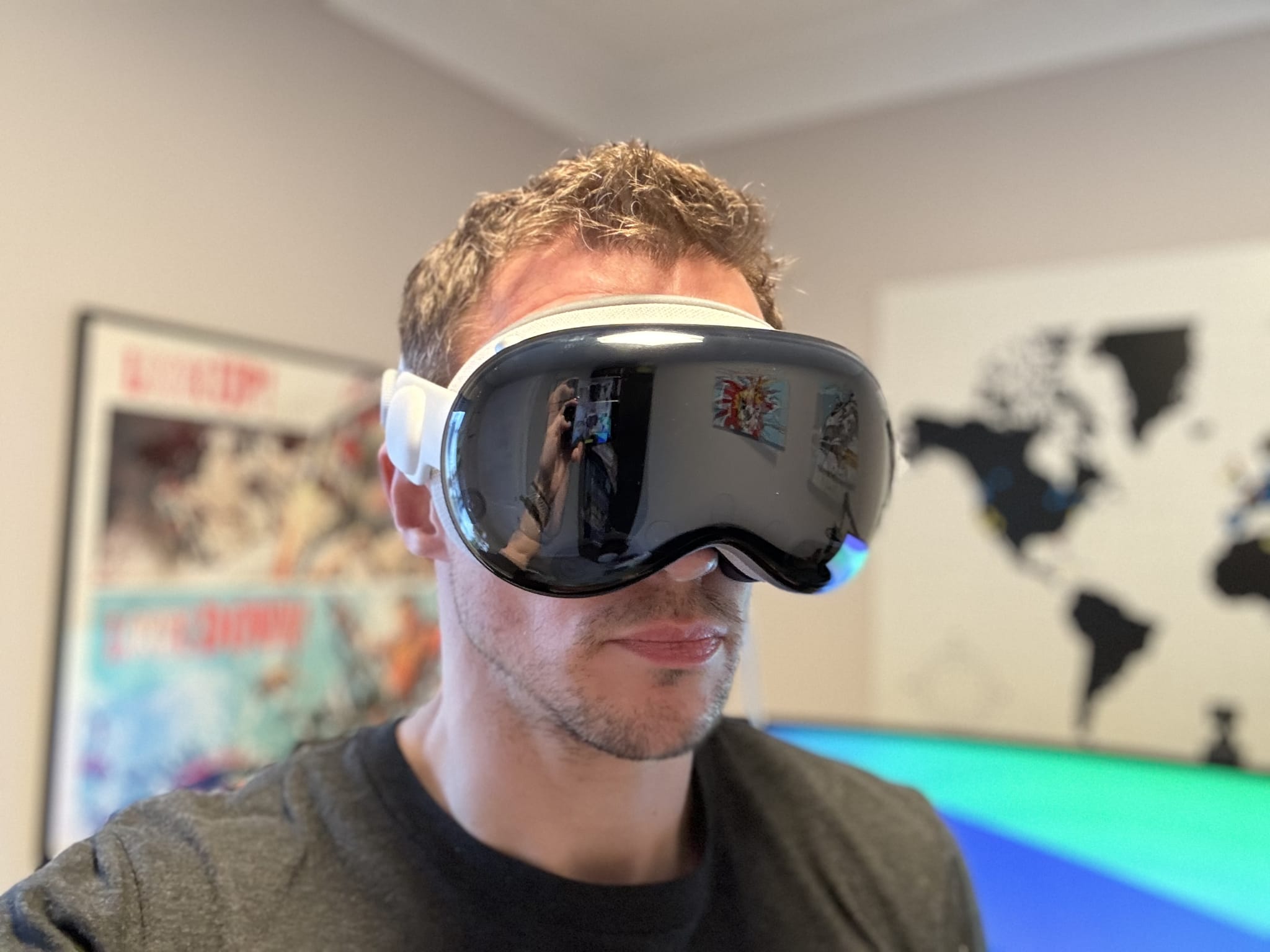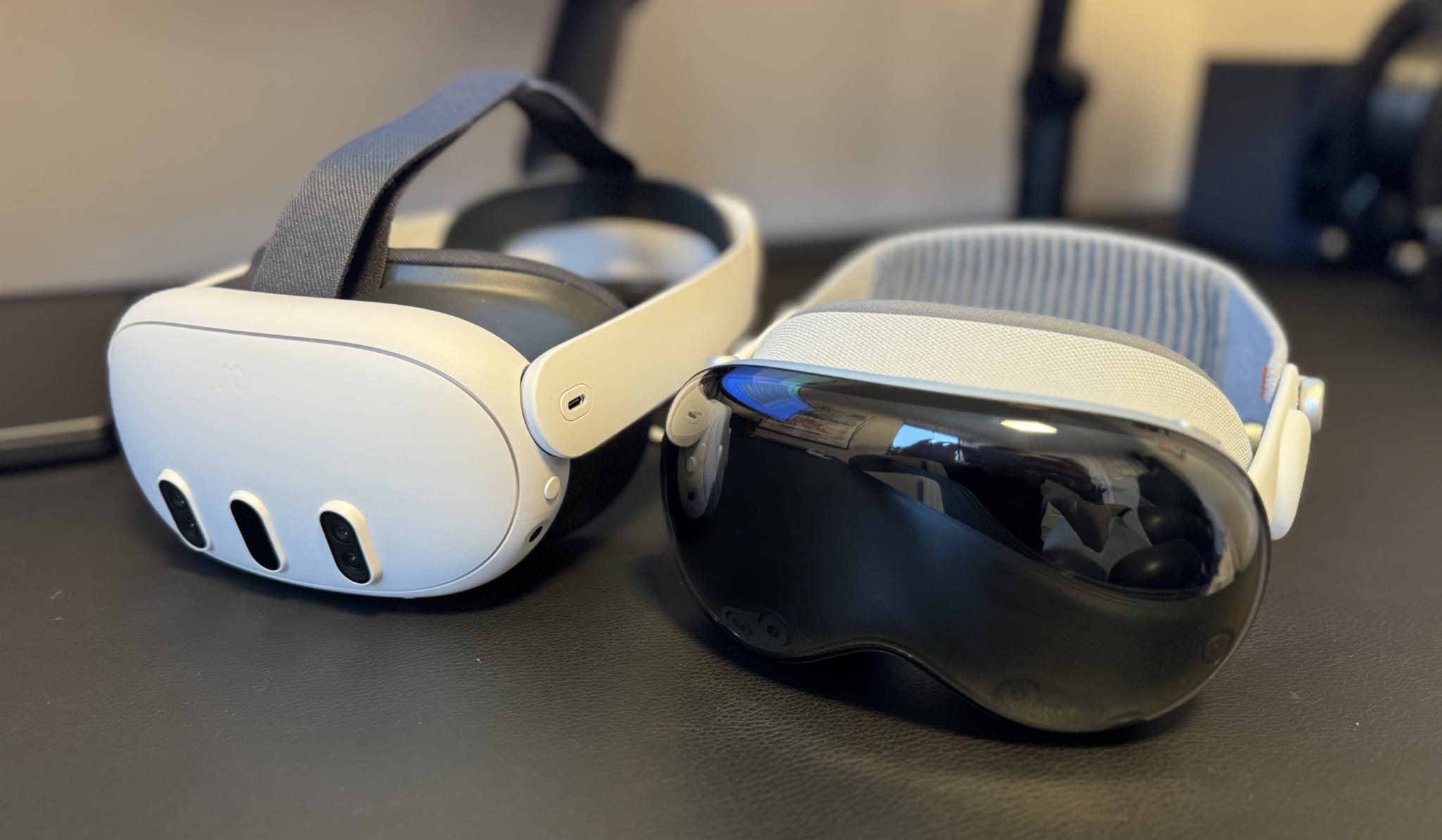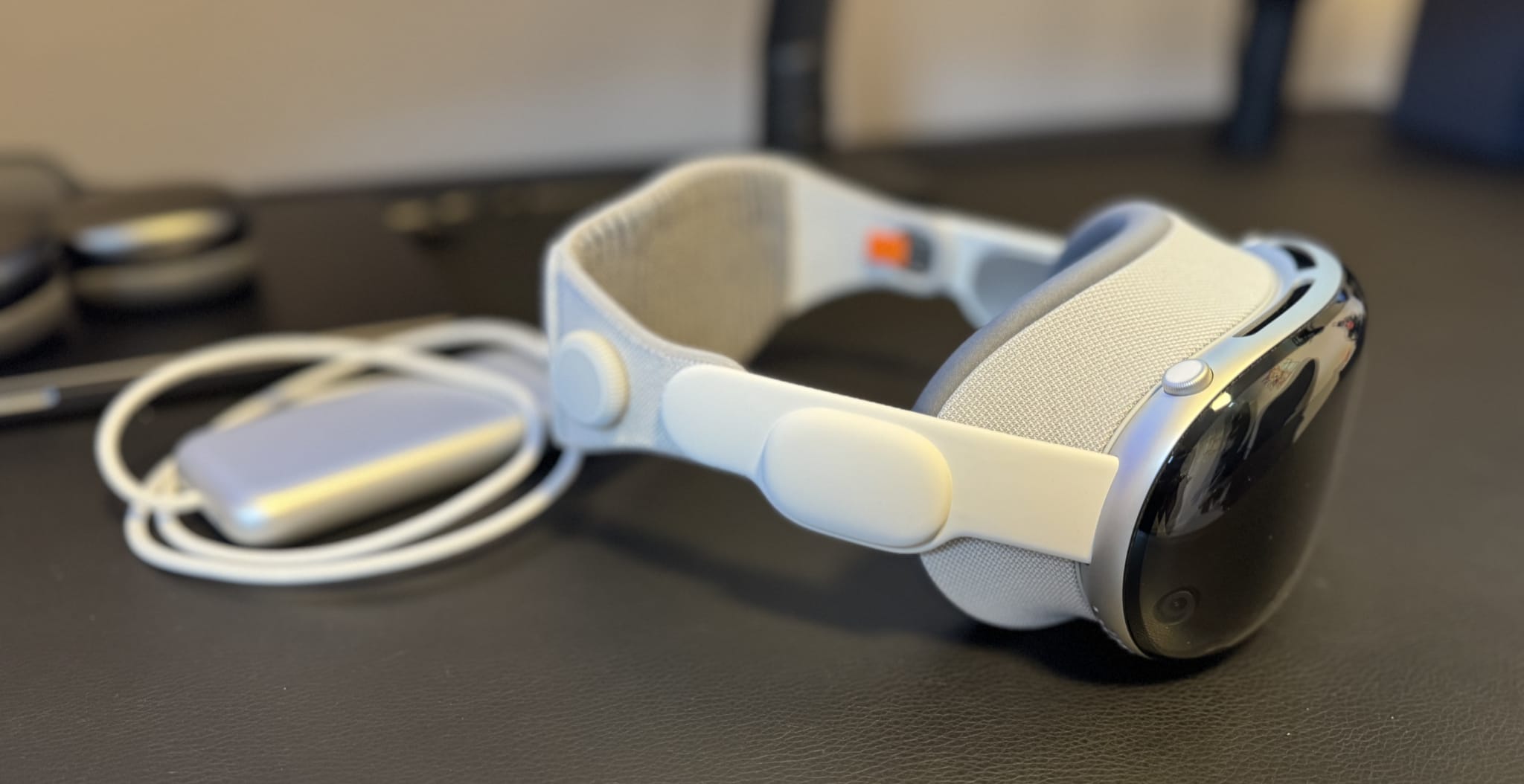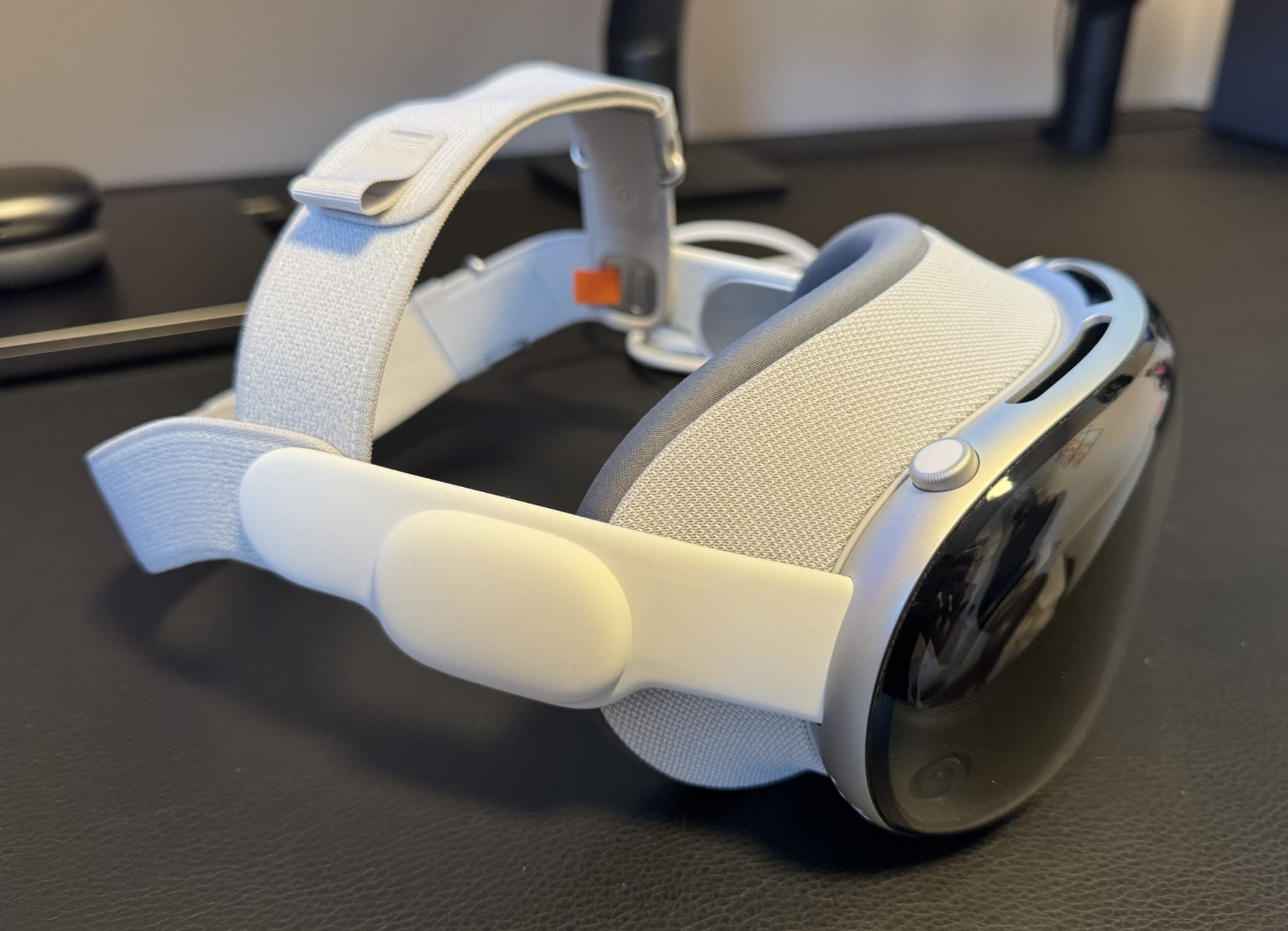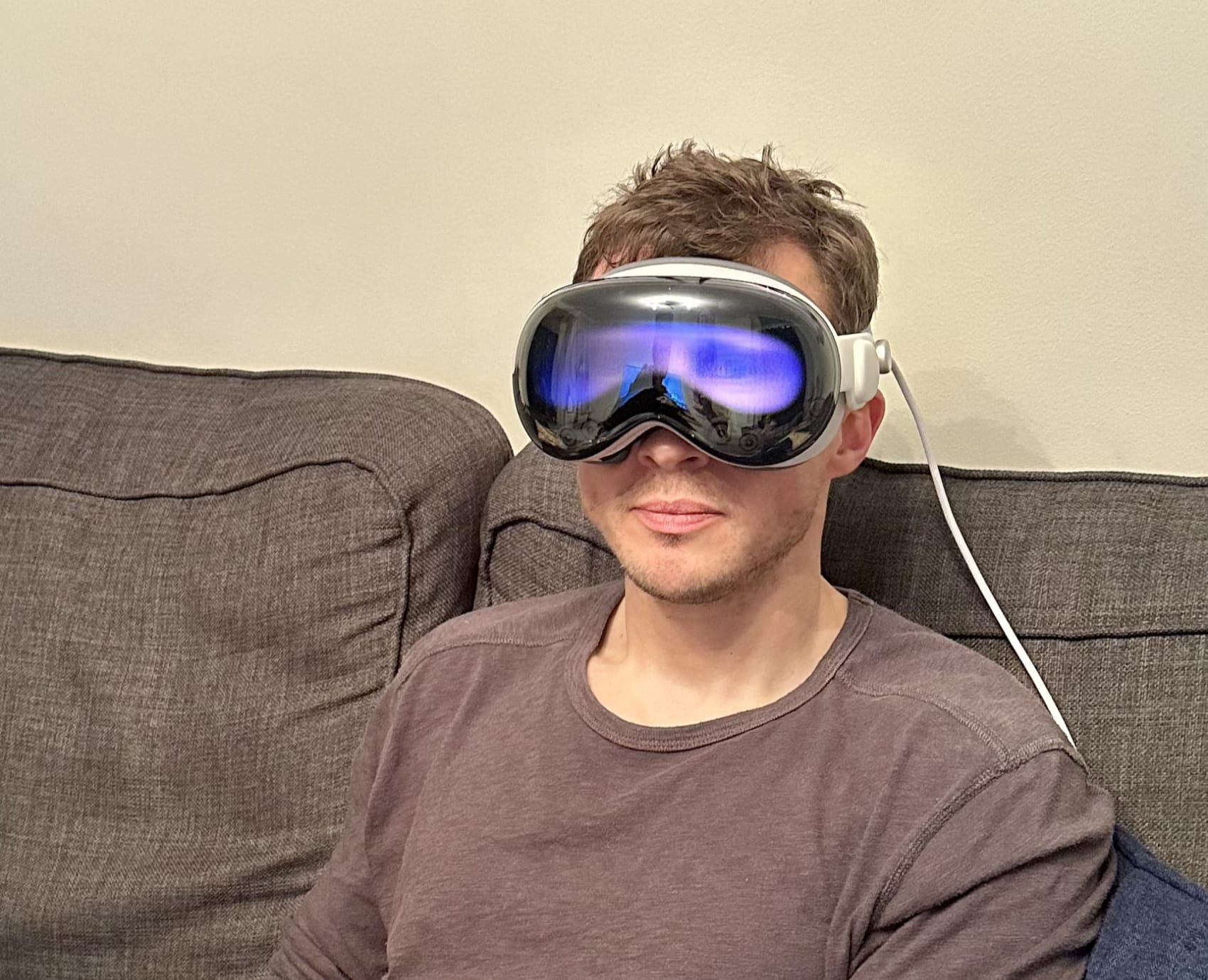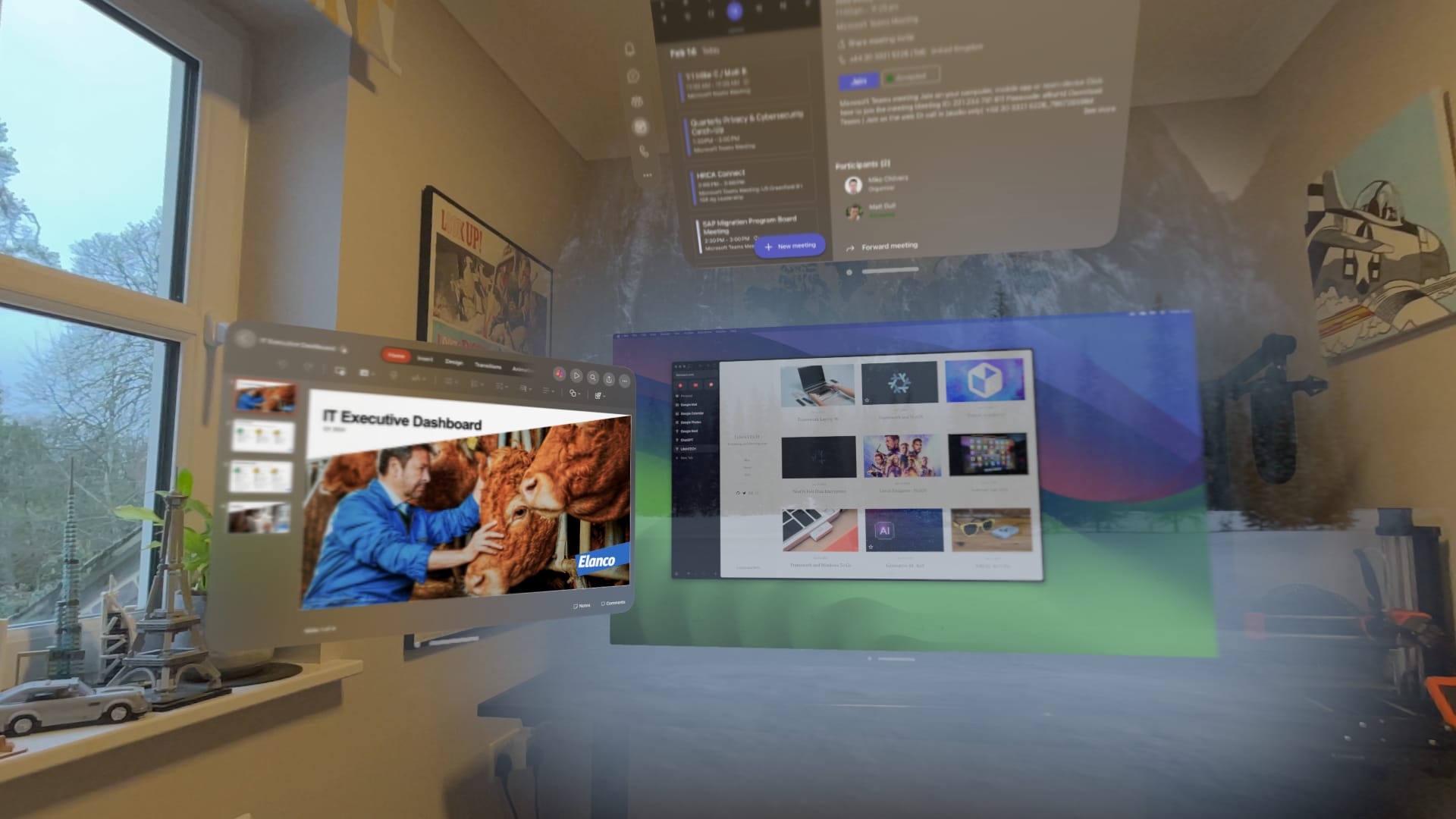Apple Vision Pro Impressions
In June 2023, I wrote an article reacting to the Apple Vision Pro announcement.
Although the Apple Vision Pro is not yet available in the UK, I am fortunate to have early access. This article will share my initial impressions.
If you are looking for an in-depth review, Nilay Patel from The Verge has posted an excellent video.
When first announced, Tim Cook (Apple CEO) described the Apple Vision Pro as “the first computer you look through, not at”.
I surmised that this statement accurately represented the ambition, but not the current reality. Having now used the Apple Vision Pro across a range of use cases, I can confirm my original assessment was accurate.
Outlined below are my thoughts…
Product Positioning
Over the past decade, I have used/owned a wide range of VR/AR headsets, including the latest headsets from Meta (Quest Pro and Quest 3) and HoloLens 2 from Microsoft.
Since the announcement, Apple has been eager to differentiate the Apple Vision Pro from other VR/AR headsets by calling it “Spatial Computing”. They have even banned developers from using the terms Virtual Reality and Augmented Reality within their application descriptions.
However, let us be clear, the Apple Vision Pro is 100% a VR/AR headset, which directly competes against other VR/AR headsets, most notably the Meta Quest range, etc.
Arguably, the Apple Vision Pro includes just two unique differentiators, specifically the front-facing lenticular display and the Solo Knit Band.
Excluding these features, when compared to the Meta Quest 3, the Apple Vision Pro offers a very familiar design and feature set.
With that said, I can confirm the Apple Vision Pro is the best, highest-quality VR/AR headset I have ever used. For example, the Sony Micro‑OLED displays are exceptional, with an astonishing 3,386 PPI (34 PPD). The pass-through cameras are also best-in-class (although not perfect), achieving an estimated 12ms response time.
However, this impressive specification is ultimately an evolutionary step, not revolutionary, as the form factor and usage of the headset are consistent with other VR/AR headsets.
It is also impossible to ignore the price, which starts at £3499 (256GB), which is 7x more than the Meta Quest 3 (128GB). Therefore, it is safe to assume that a Meta Quest 4 (or Meta Quest Pro 2) could close the specification gap, whilst continuing to be significantly cheaper.
Hardware
The hardware is beautiful, with exceptional build quality. The use of metal and glass makes the product look and feel premium, especially when compared to other VR/AR headsets on the market, which tend to favour plastic.
Unfortunately, although these premium materials look great, they hinder the use of the product itself. The Apple Vision Pro is undeniably heavy and frustratingly front-loaded, placing a lot of weight on the bridge of the nose and cheeks, which can quickly become uncomfortable during prolonged usage (> 30 minutes).
This issue is compounded by the Solo Knit Band, which looks great in promotional videos/photos (straight out of Ready Player One), but is less practical in use as it does not effectively distribute the weight of the headset. Apple were aware of this issue, as they include a less glamorous (but more practical) Dual Loop Band.
In addition, the front-facing lenticular display, combined with a software feature known as “EyeSight”, is an interesting concept, but offers very little real-world value. In theory, EyeSight reveals your eyes while wearing Apple Vision Pro, letting others know when you are using apps or fully immersed. Unfortunately, the display is difficult to see (especially in direct light) and the computer-generated eyes, although impressive engineering, are a little disconcerting.
Acknowledging these failings, it is ironic that the front-facing lenticular display and Solo Knit Band are what differentiates the Apple Vision Pro from other VR/AR headsets. I would not be surprised if they are both heavily revised (or even removed) in future generations.
Software
Unsurprisingly, at launch, the Apple Vision Pro software ecosystem is sparse, limited to a series of “tech demos” that fail to offer a compelling reason to use the headset for any meaningful length of time. The current range of apps are also very isolating, with no features that promote social engagement and/or collaboration.
A notable exception is Microsoft Office, which offers Apple Vision Pro optimised versions of Word, Excel, PowerPoint, Outlook, Teams, OneNote, and Loop. These apps work surprisingly well and I commend Microsoft for committing to the launch date.
Thankfully, the limited software ecosystem is likely an early adopter problem, which I am sure will improve quickly. I am however a little surprised Apple did not prioritise/promote a “killer app”, something that could showcase the capabilities of the Apple Vision Pro. The best example is probably media playback via Apple TV, which is very immersive, but not enough to differentiate from other VR/AR headsets.
Unlike other VR/AR headsets, the Apple Vision Pro does not include any physical controllers. Therefore, all interactions are via eye and hand tracking.
The initial setup process is more cumbersome than I would like, but once complete, everything works as advertised. For example, my eight-year-old son was able to navigate the user interface with minimal instruction.
Unfortunately, it is not perfect. Having never previously used my eyes as a direct human interface, I had not appreciated how frequently I interact with technology without directly looking at it. For example, thanks to muscle memory, I can tap, swipe and gesture on my iPhone/iPad, whilst my eyes focus elsewhere.
With Apple Vision Pro, this type of human interface does not work, as you must directly look at the user interface element when triggering an input.
As a result, although eye tracking does (at times) feel like “magic”, it can also be frustrating when attempting to complete more complex tasks. For example, when attempting to be productive whilst wearing the headset, I found I had to connect a physical keyboard/trackpad or interface with my Mac.
Overall, visionOS and the software ecosystem remind me of watchOS v1.0, which had plenty of promise but took several years to refine the experience.
Conclusion
The Apple Vision Pro is the most impressive VR/AR headset I have ever used! It is also the most expensive and uncomfortable, whilst currently offering very little real-world value.
As a result, in February 2024, it is impossible to recommend the Apple Vision Pro. If you are in the market for a VR/AR headset, I would point you towards the Meta Quest 3, which is a fraction of the cost and has a comprehensive software ecosystem.
However, that does not mean the Apple Vision Pro is a failure. I continue to see the promise, which I believe has been best represented in the recent Casey Neistat video.
There is a world where “Spatial Computing” becomes viable, delivering unique, differentiated experiences that augment traditional computing concepts.
Unfortunately, I believe we are at least four generations (8+ years) from that reality, where the physical limitations of the headset have been mitigated and the software experience has been refined and expanded.
The path from today towards that future is exciting but also expensive and fraught with missteps. Therefore, it will be interesting to watch Apple lead from the front vs. joining at a later date, once the market has a solid foundation.
